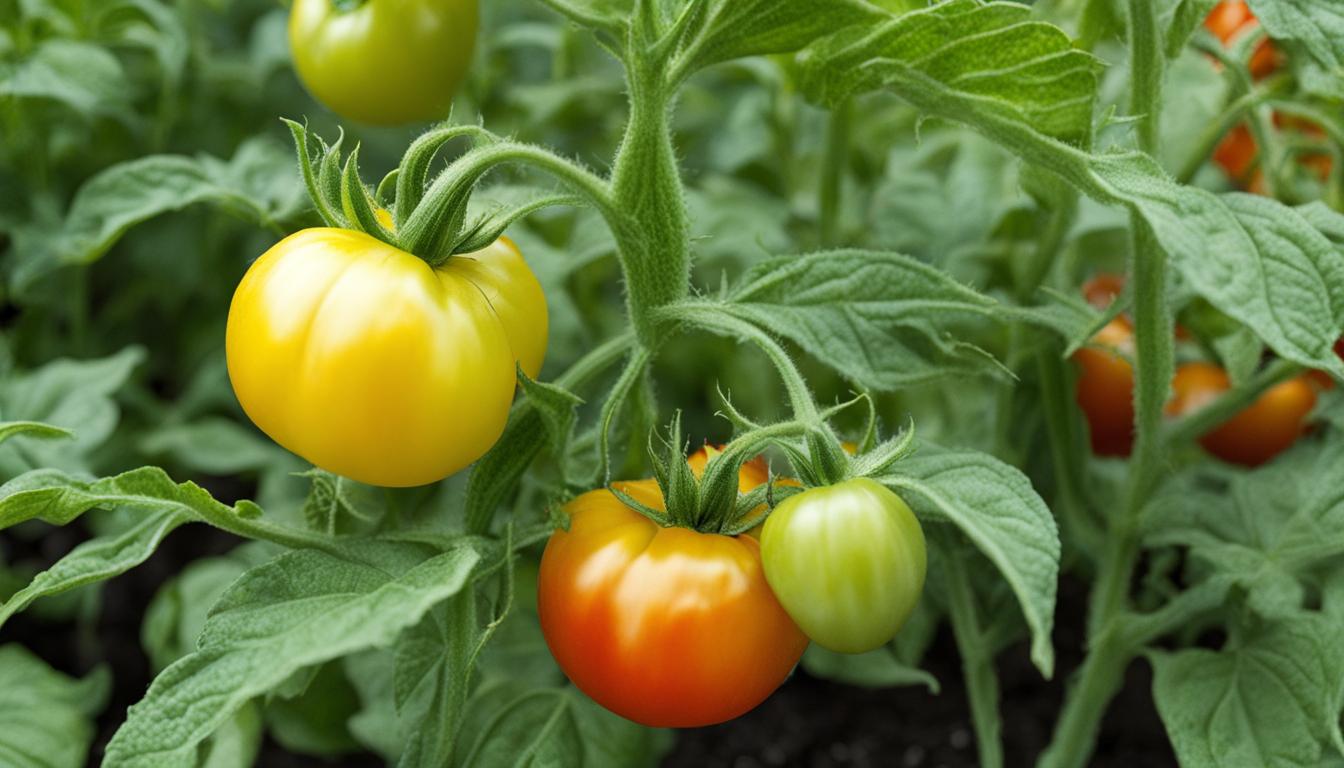
Welcome to my article on how to identify nitrogen deficiency in plants! As a plant enthusiast, I understand the importance of providing the right nutrients for healthy growth. Nitrogen is a vital mineral element that plants require, and its deficiency can have detrimental effects on their development.
Plants suffering from nitrogen deficiency often exhibit slow growth and uniform yellowing of older leaves. They may produce smaller than normal fruit, leaves, and shoots.
Stone fruits, in particular, may show yellowing and reddening of leaves or red spotting at the top of the tree. These visual symptoms can strongly suggest a lack of nitrogen in the plants.
To confirm nitrogen deficiency, laboratory analysis of soil and leaf samples can be conducted. This analysis helps in accurately diagnosing the deficiency and taking appropriate measures to address it.
Key Takeaways:
- Nitrogen deficiency in plants can cause slow growth and yellowing of older leaves.
- Smaller than normal fruit, leaves, and shoots can indicate a lack of nitrogen.
- Stone fruits may exhibit yellowing, reddening, or red spotting on leaves.
- Laboratory analysis of soil and leaf samples helps confirm nitrogen deficiency.
- Addressing nitrogen deficiency requires providing additional nitrogen through appropriate measures.
Understanding Nitrogen and Its Importance for Plants
Nitrogen is a crucial element for plant growth and development. It plays a vital role in various plant processes, including the formation of chlorophyll, which is essential for photosynthesis.
Without an adequate supply of nitrogen, plants can exhibit symptoms of nitrogen deficiency, such as yellowing of lower leaves, weak shoots or branches, and stunted growth.
One of the key indicators of nitrogen deficiency in plants is the yellowing of older leaves while the leaves at the top remain pale green.
This uniform yellowing of foliage is a visual sign that the plant is lacking nitrogen. Other symptoms may include purple stripes on stems, reduced leaf growth, and poor fruiting.
In order to maintain healthy plant development, it is important to recognize these signs of nitrogen deficiency and take appropriate action.
By understanding the importance of nitrogen and being able to identify nitrogen deficiency symptoms, growers can address the issue promptly and provide the necessary nutrients for optimal plant growth.
Table: Symptoms of Nitrogen Deficiency in Plants
| Plant Species | Symptoms |
|---|---|
| Corn | V-patterned yellowing of leaves, poorly filled ears, glossy kernels, brownish stover |
| Rice | Yellowing of lower young leaves, poor canopy production |
| Soybeans | Light-green and yellowish foliage with interveinal chlorosis |
| Cotton | Light-green foliage, poor boll formation, square and boll abscission |
| Wheat | Yellowing of older leaf tips, light-pink colored stems |
Being able to identify nitrogen deficiency symptoms in specific crops can help growers address the issue more effectively. By providing the necessary nitrogen supplementation and adjusting soil conditions, the health and productivity of the plants can be improved.
Causes of Nitrogen Deficiency in Plants
Diagnosing and recognizing nitrogen deficiency in plants is crucial for maintaining their health and promoting optimal growth.
Understanding the causes of nitrogen deficiency can help gardeners and farmers prevent and address this issue effectively. Here are some common causes of nitrogen deficiency in plants:
- Poor soil conditions: Plants may suffer from a lack of nitrogen if they are grown in soil that is low in organic matter or poorly drained. These conditions can hinder the release and availability of nitrogen to the plants.
- Incorrect pH levels: Soil pH plays a significant role in nutrient availability. When the pH of the soil is too high or too low, it can affect the uptake of nitrogen by plants, leading to deficiency symptoms.
- Inadequate nitrogen supply: Insufficient nitrogen application through fertilizers or natural sources can result in nitrogen deficiency. This can happen when the plants are not provided with enough nitrogen to meet their growth and development needs.
- Natural soil depletion: Continuous cultivation of crops without adequate nutrient replenishment can deplete the nitrogen levels in the soil over time, causing deficiency in subsequent plantings.
- Excess of certain nutrients: Imbalances in nutrient levels, such as an excess of manganese, chloride, potassium, or zinc, can interfere with the plant’s ability to absorb and utilize nitrogen effectively, leading to deficiency symptoms.
- Root system damage: When plants have damaged or dysfunctional root systems, their ability to take up nutrients, including nitrogen, may be compromised. This can result from factors such as root diseases, pests, or physical damage to the roots.
By identifying and addressing these underlying causes, gardeners and farmers can effectively combat nitrogen deficiency in plants and ensure their healthy growth and productivity.
Regular soil testing, proper fertilization practices, and maintaining optimal soil conditions are key strategies to prevent and manage nitrogen deficiency.
Visual Symptoms of Nitrogen Deficiency
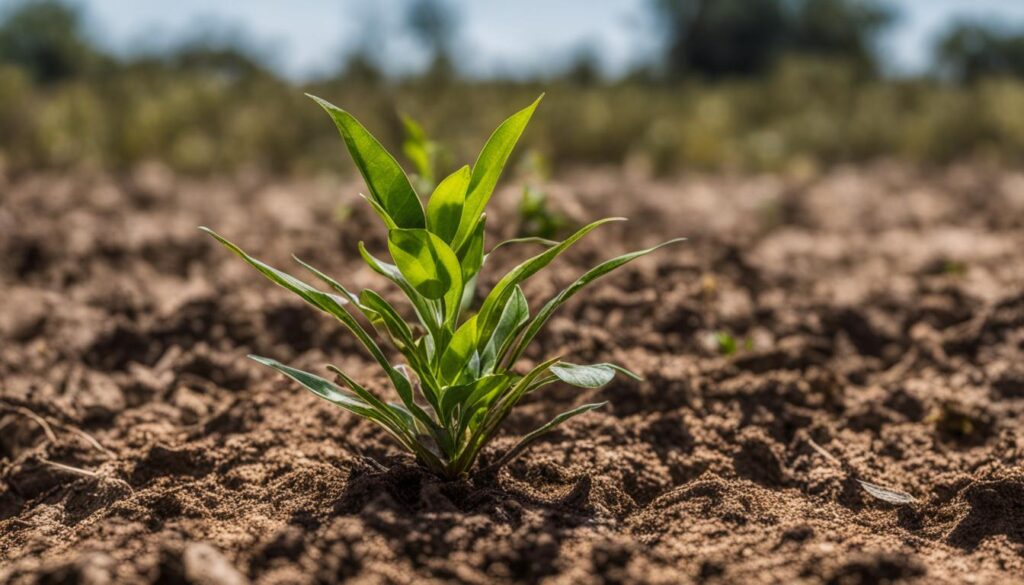
When it comes to identifying nitrogen deficiency in plants, visual symptoms play a crucial role. By carefully observing the plant’s appearance, we can determine if it is experiencing a shortage of nitrogen. Some of the most common visual symptoms of nitrogen deficiency include:
- Yellowing of lower leaves while the leaves at the top remain pale green
- Weak shoots or branches
- Purple stripes on stems
- Browning and withering of leaves
- Reduced flowering and fruiting
- Stunted growth
- Eventual death of the plant if the deficiency persists
These visual cues are indicative of the plant’s struggle to obtain an adequate supply of nitrogen, which is essential for its growth and development.
It’s important to note that the appearance of these symptoms may vary depending on the plant species. Thus, careful observation and comparison to known nitrogen deficiency symptoms can help in accurate identification.
Visual Symptoms of Nitrogen Deficiency: A Closer Look
Let’s take a closer look at some of the visual symptoms associated with nitrogen deficiency:
| Plant | Visual Symptoms |
|---|---|
| Corn | V-patterned yellowing of leaves, poorly filled ears, glossy kernels, and brownish stover |
| Rice | Yellowing of lower young leaves and poor canopy production |
| Soybeans | Light-green and yellowish foliage with interveinal chlorosis |
| Cotton | Light-green foliage, poor boll formation, and square and boll abscission |
| Wheat | Yellowing of older leaf tips and light-pink colored stems |
By recognizing these unique symptoms for different crops, we can better diagnose and address nitrogen deficiency in plants.
Health Effects of Nitrogen Deficiency on Different Crops
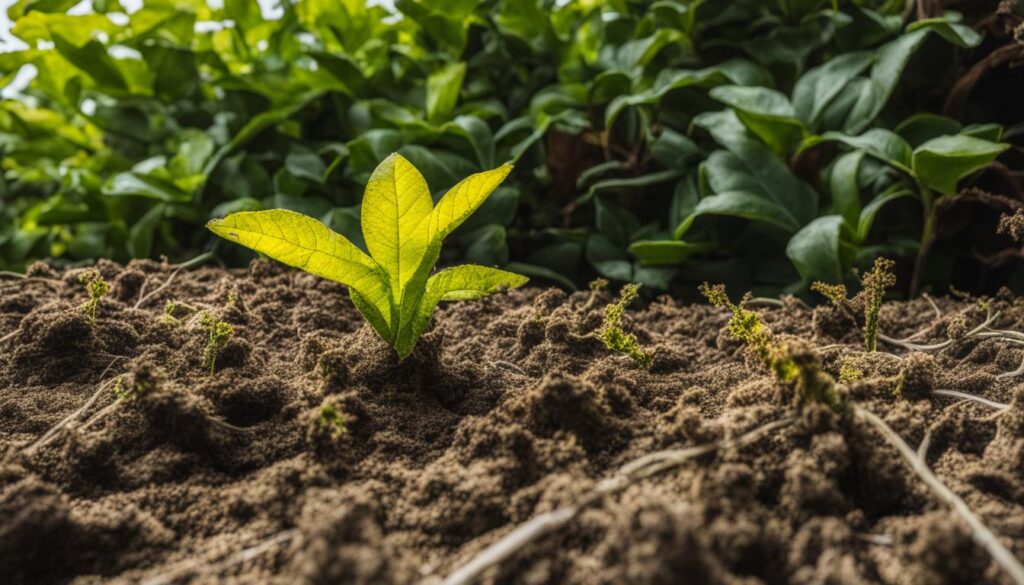
When it comes to nitrogen deficiency, different crops exhibit unique symptoms that can help growers identify and address nutrient deficiencies in their plants. Understanding these symptoms is crucial for ensuring healthy crop development and maximizing yield potential.
Nitrogen Deficiency Symptoms in Corn
Corn plants suffering from nitrogen deficiency often display V-patterned yellowing of leaves, starting from the tip and extending towards the base.
This characteristic yellowing is known as chlorosis and occurs due to the lack of chlorophyll production. In addition to leaf discoloration, plants may show poorly filled ears, glossy kernels, and stunted growth.
Nitrogen Deficiency Symptoms in Rice
Rice plants experiencing nitrogen deficiency exhibit yellowing of the lower young leaves, while the upper leaves remain relatively green.
This symptom, known as interveinal chlorosis, affects the veins of the foliage and can significantly reduce photosynthesis and overall plant productivity. Nitrogen-deficient rice plants may have poor canopy production, leading to decreased grain yield.
Nitrogen Deficiency Symptoms in Soybeans
In soybeans, nitrogen deficiency manifests as light-green and yellowish foliage. The leaves may display interveinal chlorosis, indicating a lack of chlorophyll production. As a result, soybean plants may experience reduced growth and development, leading to lower yield potential.
Nitrogen Deficiency Symptoms in Cotton
Cotton plants suffering from nitrogen deficiency often have light-green foliage and slower than normal growth. The lack of nitrogen can negatively impact boll formation, resulting in reduced cotton production. Square and boll abscission, where the flowers or young bolls detach from the plant before maturing, may also occur.
Nitrogen Deficiency Symptoms in Wheat
Wheat plants with nitrogen deficiency typically exhibit yellowing of the older leaf tips, progressing towards the base of the plant. The stems may also acquire a light-pink coloration. These symptoms can ultimately impact grain production and reduce overall yield potential.
| Crop | Symptoms |
|---|---|
| Corn | V-patterned yellowing of leaves, poorly filled ears, glossy kernels, stunted growth |
| Rice | Yellowing of lower young leaves, interveinal chlorosis, poor canopy production |
| Soybeans | Light-green and yellowish foliage, interveinal chlorosis, reduced growth |
| Cotton | Light-green foliage, poor boll formation, square and boll abscission |
| Wheat | Yellowing of older leaf tips, light-pink colored stems |
Causes of Nitrogen Deficiency and Treatment in Plants
Nitrogen deficiency in plants can occur due to various factors that affect nutrient availability and uptake. Understanding the causes of nitrogen deficiency is crucial in implementing effective treatment strategies.
Here, I will explore some common causes of nitrogen deficiency in plants and discuss the different approaches to treating this deficiency.
Causes of Nitrogen Deficiency
Nitrogen deficiency can arise from inadequate nitrogen supply in the soil. This can happen when plants are not receiving enough nitrogen-rich fertilizers or when the soil itself lacks sufficient nitrogen content.
Other causes include imbalanced soil pH levels, which can inhibit nutrient absorption, and the presence of excessive amounts of other nutrients that compete with nitrogen for uptake.
Furthermore, damaged or dysfunctional root systems can also contribute to nitrogen deficiency as plants are unable to efficiently absorb nutrients from the soil.
Finally, natural soil depletion over time may result in a lack of nitrogen necessary for healthy plant growth.
Treating Nitrogen Deficiency
When it comes to treating nitrogen deficiency in plants, there are several approaches that can be employed.
One method is to provide additional nitrogen through the use of nutrient additives or foliar sprays. These supplements can quickly deliver nitrogen to plants, helping to alleviate the deficiency.
Another strategy involves incorporating organic mulch, such as compost or manure, into the soil. This helps to improve soil fertility by gradually releasing nitrogen over time.
Monitoring and adjusting fertilization practices based on soil and leaf analysis can ensure that plants receive the necessary nutrients, including nitrogen.
By addressing the underlying causes of nitrogen deficiency and implementing appropriate treatments, you can help your plants thrive and reach their full growth potential.
Prevention and Management of Nitrogen Deficiency in Plants
To ensure healthy plant growth and prevent nitrogen deficiency, it is important to take proactive steps in maintaining optimal conditions for your plants.
By following these preventive measures and implementing effective management strategies, you can help your plants thrive and avoid the detrimental effects of nitrogen deficiency.
Preventing Nitrogen Deficiency in Plants
- Maintain optimal pH levels: Regularly monitor and adjust the pH levels in your soil to ensure it remains within the appropriate range for nitrogen uptake.
- Provide adequate nitrogen supply: Choose fertilizers or organic amendments that provide a balanced nitrogen supply to meet your plants’ needs. Follow recommended application rates for proper nutrient uptake.
- Monitor soil nutrient levels: Conduct regular soil tests to assess nutrient levels and make necessary adjustments. This will help you detect any potential deficiencies early on and take corrective actions.
- Ensure root health: Maintain healthy root systems by avoiding excessive soil compaction, proper irrigation practices, and protecting roots from damage.
Managing Nitrogen Deficiency in Plants
If nitrogen deficiency symptoms arise despite preventive measures, timely intervention is crucial to manage the deficiency and support plant recovery. Here are some effective management strategies:
- Adjust fertilization practices: Increase nitrogen application rates based on soil and plant analysis results. This will help replenish the deficient nutrient levels and promote healthy plant growth.
- Consider foliar sprays: Apply nitrogen-rich foliar sprays directly to the leaves, allowing for quick absorption and utilization by the plants.
- Utilize organic mulching: Incorporate organic mulch, such as compost or manure, around the base of plants. This can gradually release nitrogen into the soil, providing a sustained nutrient supply.
- Monitor and assess plant response: Regularly observe the plants’ response to the implemented management strategies. Adjust treatments as necessary, based on the visual improvement of the nitrogen deficiency symptoms.
By implementing these preventive measures and effectively managing nitrogen deficiency, you can ensure optimal plant growth, improved yields, and overall plant health.
Regular monitoring, timely interventions, and providing the necessary nutrients will go a long way in supporting your plants’ nitrogen needs.
| Nitrogen Deficiency Prevention and Management Strategies | Benefits |
|---|---|
| Maintain optimal pH levels | Ensures efficient nitrogen uptake |
| Provide adequate nitrogen supply | Promotes healthy plant growth and development |
| Monitor soil nutrient levels | Enables timely adjustments to prevent deficiencies |
| Ensure root health | Facilitates optimal nutrient absorption |
| Adjust fertilization practices | Replenishes nitrogen levels and supports plant recovery |
| Consider foliar sprays | Provides quick nitrogen supplementation |
| Utilize organic mulching | Gradually releases nitrogen for sustained plant nutrition |
| Monitor and assess plant response | Allows for adjustments based on visual improvement |
Implementing these strategies will help you prevent and manage nitrogen deficiency, ensuring optimal plant health and productivity.
Further Resources for Treating Nitrogen Deficiency in Plants
If you’re looking for more information on how to fix nitrogen deficiency in plants, there are several resources available to help you effectively treat this issue.
These resources can provide valuable guidance on common nutrient deficiencies, pH and temperature management, methods to add nitrogen to soil, and specific advice for different plant species.
One helpful resource is a guide specifically focused on nutrient deficiencies and their remedies. These guides often provide detailed information on identifying and correcting nitrogen deficiency, along with other essential nutrients that plants need for optimal growth.
You can also explore resources that offer insights on managing soil pH levels and temperature conditions. Maintaining the right pH and temperature is crucial for nutrient absorption and overall plant health.
These resources can provide practical tips and techniques to create the ideal environment for addressing nitrogen deficiency.
For more personalized recommendations, consider consulting with local grow shops or plant nutrient experts. They can assess your specific growing situation and offer tailored advice on how to best treat nitrogen deficiency in your plants.
Their expertise and knowledge can be invaluable in ensuring your plants receive the necessary nutrients for healthy growth.
FAQ
How can I identify nitrogen deficiency in plants?
Nitrogen deficiency in plants can be identified by visual symptoms such as yellowing of lower leaves, weak shoots or branches, purple stripes on stems, browning and withering of leaves, reduced flowering and fruiting, stunted growth, and eventual death of the plant if the deficiency persists.
What are the signs of nitrogen deficiency in plants?
Signs of nitrogen deficiency in plants include yellowing of lower leaves, weak shoots or branches, purple stripes on stems, reduction in new leaf growth, and stunted plant growth.
How can I recognize nitrogen deficiency in crops?
Different crops exhibit unique nitrogen deficiency symptoms. For example, corn may show V-patterned yellowing of leaves, poorly filled ears, glossy kernels, and brownish stover. Rice may exhibit yellowing of lower young leaves and poor canopy production. Soybeans may have light-green and yellowish foliage with interveinal chlorosis. Cotton plants may display light-green foliage, poor boll formation, and square and boll abscission. Wheat may have yellowing of older leaf tips and light-pink colored stems.
What are the causes of nitrogen deficiency in plants?
Nitrogen deficiency in plants can be caused by factors such as incorrect pH levels in the soil, inadequate nitrogen supply from fertilizers or natural sources, natural soil depletion, excess of certain nutrients like manganese, chloride, potassium, or zinc, damaged or dysfunctional root system, and poor soil conditions.
How can I detect the lack of nitrogen in plants?
The visual symptoms of nitrogen deficiency in plants, such as yellowing of lower leaves while the leaves at the top remain pale green, weak shoots or branches, purple stripes on stems, and reduced flowering and fruiting, indicate a lack of nitrogen.
What are the health effects of nitrogen deficiency on different crops?
Nitrogen deficiency in different crops can result in specific symptoms. For example, corn may have poorly filled ears and glossy kernels. Rice may exhibit poor canopy production. Soybeans may display interveinal chlorosis. Cotton plants may have poor boll formation and abscission. Wheat may experience yellowing of older leaf tips.
What causes nitrogen deficiency in plants and how can it be treated?
Nitrogen deficiency in plants can be caused by factors such as incorrect pH, inadequate nitrogen supply, natural soil depletion, excess of certain nutrients, or root system damage. Treating nitrogen deficiency involves providing additional nitrogen through specific nutrient additives or foliar sprays. Soil-based plants can benefit from organic mulching with compost or manure to provide a steady supply of nitrogen.
How can I prevent and manage nitrogen deficiency in plants?
Preventing nitrogen deficiency involves maintaining optimal pH levels, providing appropriate nitrogen supply, monitoring soil nutrient levels, and ensuring root health. Regularly monitoring the plants’ nutrient needs, conducting soil and leaf analysis, and adjusting fertilization practices can help manage nitrogen deficiency.
Where can I find further resources for treating nitrogen deficiency in plants?
For more information on treating nitrogen deficiency in plants, additional resources such as guides on common nutrient deficiencies, pH and temperature management, methods to add nitrogen to soil, and specific advice for different plant species can be helpful. Consulting with local grow shops or plant nutrient experts can provide personalized recommendations for your specific growing situation.


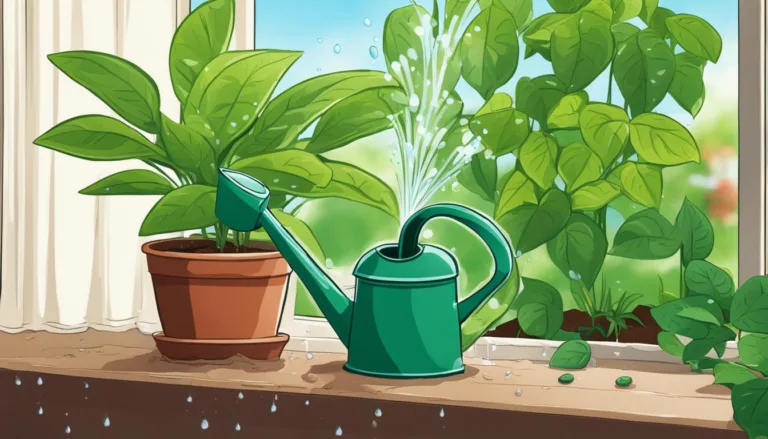

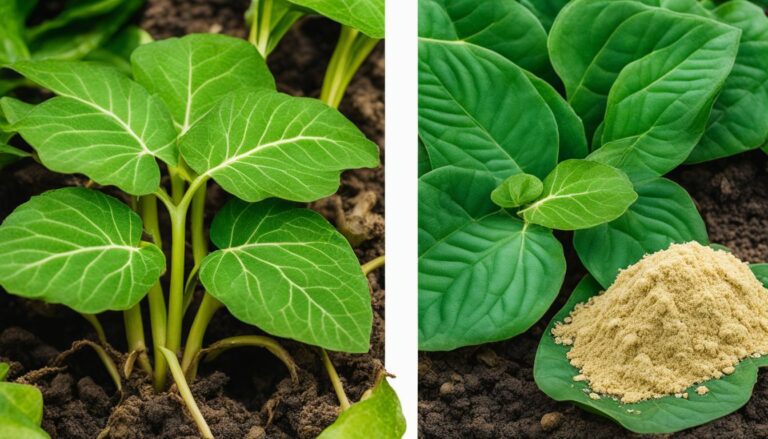

One Comment
Comments are closed.